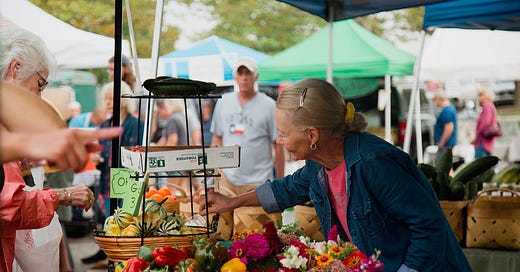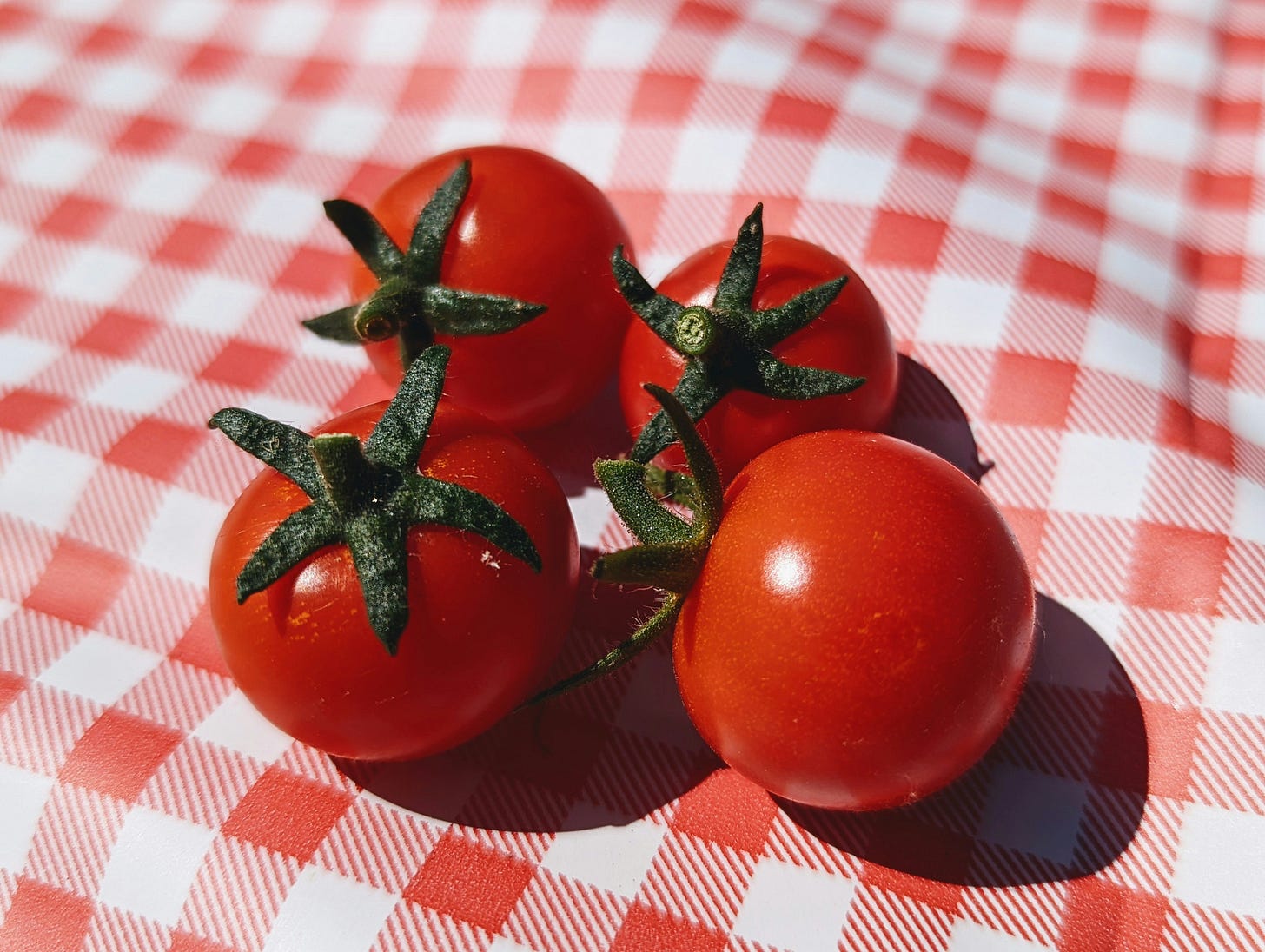Today, I’m doing something I have never done before:
I’m going to be a vendor at my local farmers market.
I told my kids what I was doing and the first question they asked was:
“What are you selling?” Confusion was dripping from their words.
When I told them I was going to be talking about and offering up coaching, the wry response that followed was, “What, are you going to be coaching farmers on how to grow better tomatoes?”
At first blush, they are right: how does a coaching business fit in at a farmers market?
As I mentioned in my last newsletter, I’ve been working to (re)launch my coaching business.
One new aspect of my coaching offering that I’m really excited to explore is what I’m calling “nature-based coaching.” What’s that?
Nature-based coaching “involves a blend of traditional coaching practices and nature-based approaches to provide the best individualized whole-person support.” — Duncan Murdoch, Nature & Forest Therapy Guide
Like any coaching experience, it starts by identifying an opportunity or challenge you want to focus on. That can be investing in your emotional health, work challenges, reconnecting to nature, or anything in between. From there, we will spend time in natural settings and practice mindfulness, conversation, observation, and reflection—all in pursuit of your well-being and thriving in the part of life that matters most to you right now.
So how does a farmers market fit in?
What kind of people might be most open to nature-based coaching? People who already enjoy spending time outdoors. And while not everyone attending a farmers market is tracking their progress toward 1,000 hours outside each year, I think I will likely find like-minded people.
This is me seeking possibilities, practicing optimism.
As I look to build relationships and provide meaningful, intentional coaching that will help people grow and thrive—I have to be willing to take risks, create conversation, and find the people who are looking for this exact kind of support and experience.
And that’s the thing about seeking possibilities, about practicing optimism. It isn’t built on certainty or guarantees. Being optimistic means staying open to what could be, especially when we can’t predict the future.
A pessimistic point of view might say, “Yeah, you aren’t likely to get anyone interested in coaching while they are picking up heirloom tomatoes or shopping for local honey.”
But what learning comes from not trying? What do I gain by assuming it won’t work?
Flipped the other way: how might I learn to be open to other possibilities by staying open to this one? The more we practice something, the better we get at it. So if I practice shutting down ideas and possibilities, I am going to end up cynical and stuck.
On the other hand, if I practice optimism and take chances—even if this specific idea doesn’t pan out—I can get better at practicing optimism and take that with me into my next idea, opportunity, or project.
It’s shortsighted and limited to assume the only things worth doing are things I know will work. It is in the not knowing that I learn and can be pleasantly surprised.
I’m remaining open to the possibilities.
To Check Out
Currently Reading:
Sapiens: A Brief History of Humankind by Yuval Noah Hararis
Janine Benyus and Azita Ardakani Walton — On Nature's Wisdom for Humanity / OnBeing (podcast)
“In this all-new episode, Krista engages biomimicry pioneer Janine Benyus in a second, urgent conversation, alongside creative biomimicry practitioner Azita Ardakani Walton. Together they trace precise guidance and applied wisdom from the natural world for the civilizational callings before us now.”
John Green wants you to pay attention to your attention (replay) / Re:Thinking with Adam Grant (podcast)
“In this deeply thoughtful conversation with Adam, John shares what he learned from his series of Yelp-style reviews, the gift of a great book, and the unexpected life lessons found in the last lap of Mario Kart.”
Protocols and Peak Performance / The Growth Equation (article)
“The overarching point is that we’ve got to resist the temptation to major in the minors and instead focus on what actually matters.”
The Cognitive Emotive Loop: What it is, Why it Keeps you Stuck, and How to Break Free / Conscious Leadership Group (article)
“A cognitive/emotive loop is a repeating pattern where thoughts and beliefs produce feelings that fuel our rightness about our stories, that then further intensify our feelings, and on and on.”
This dispatch was written to music, including the 2021 Lawrence song, Don’t Lose Sight. I’m mildly obsessed with this band, having just discovered them a month ago and they have a new album coming out soon.







